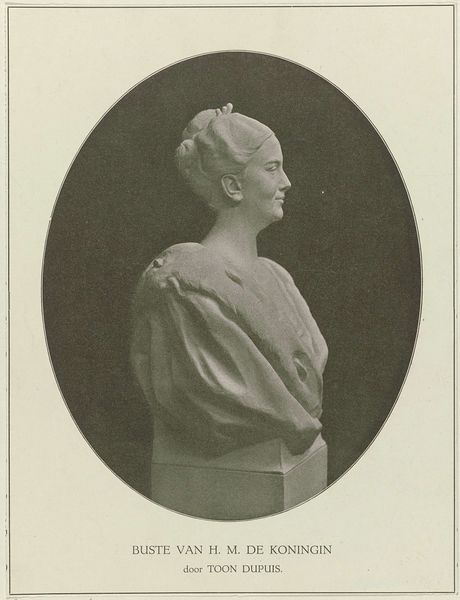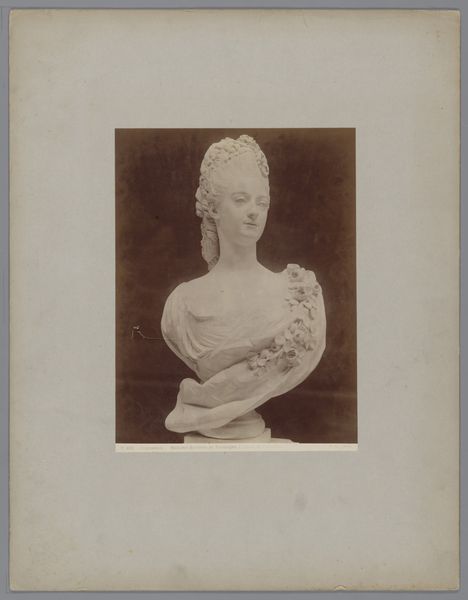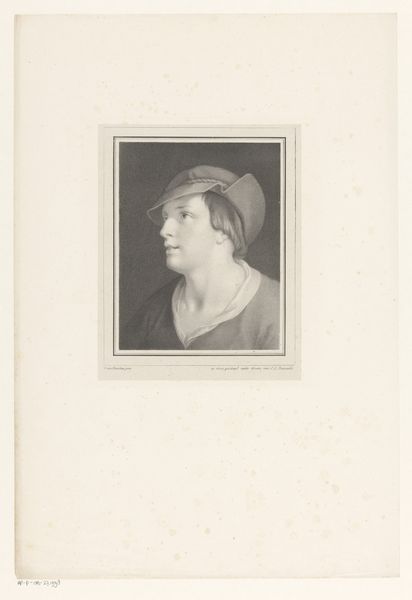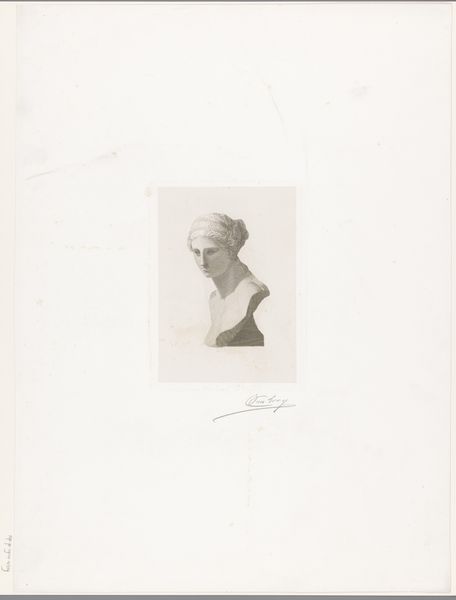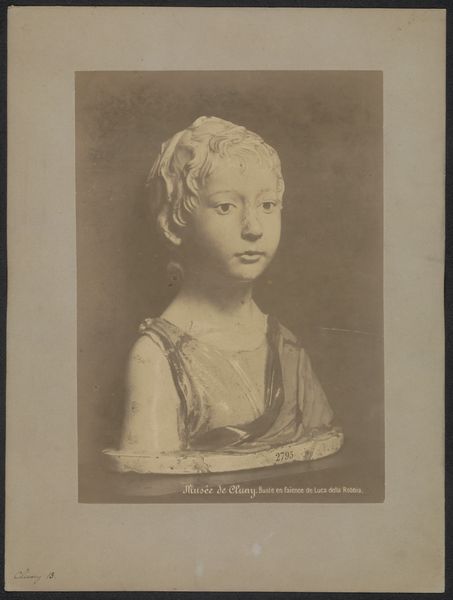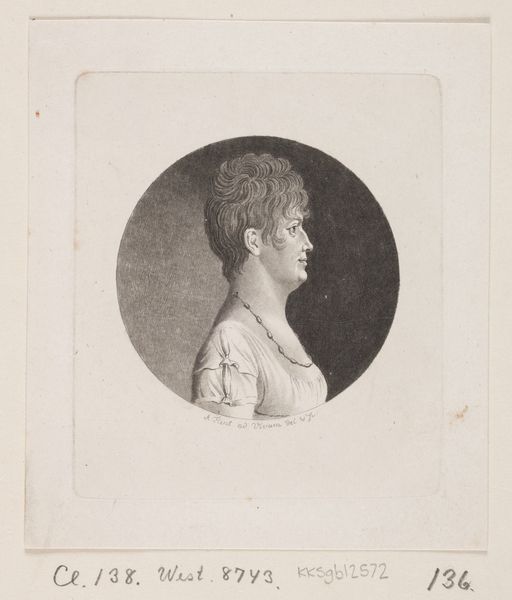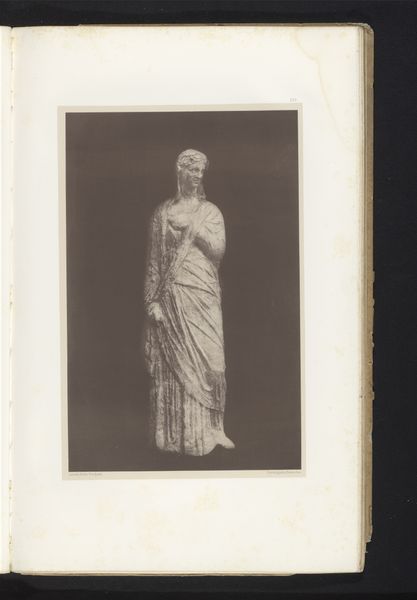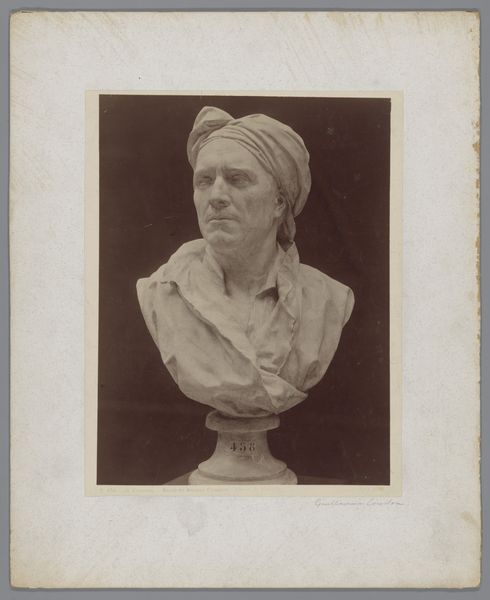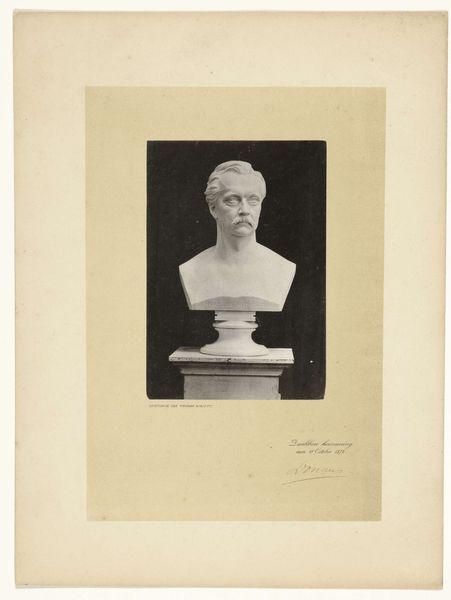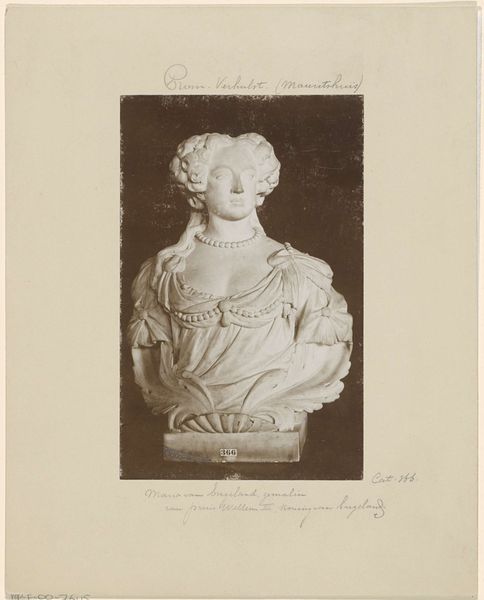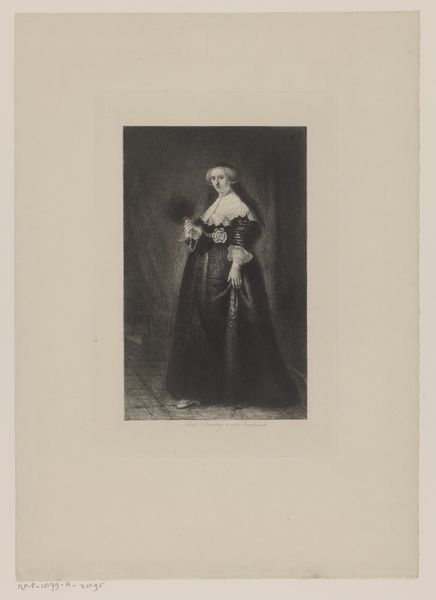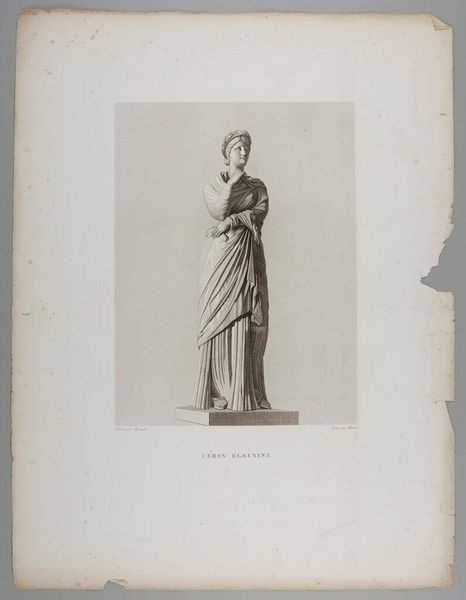
Dimensions: height 246 mm, width 178 mm
Copyright: Rijks Museum: Open Domain
Curator: This gelatin silver print at the Rijksmuseum is titled "Buste van Sophie, prinses der Nederlanden." The artwork dates roughly between 1870 and 1949, its creator remains anonymous. Editor: My first impression is somber. The monochromatic tones lend it a historical gravity, a kind of preserved dignity in the face of time. The sculptural form captured photographically almost feels like a ghost from the past. Curator: Indeed. Busts like this became popular during the Neoclassical movement, reviving interest in Greek and Roman sculptures to immortalize the figures represented in them. Often times in the context of nobility, this speaks to power. Editor: Notice how the photographer, or perhaps the sculptor themselves, uses light and shadow to accentuate the folds in the fabric and the princess’s features. The chiaroscuro adds a dimension of depth, moving beyond just a straightforward representation. The details speak of more than mere presentation. Curator: You bring up a good point. These sculptures would immortalize a figure not just for their likeness, but their virtue as well. And we read this tradition photographically through how the image has been framed as a result. Consider how these Neoclassical artists and portraitists carefully considered the pose, garments, and presentation of their subjects in their day. Editor: I agree that the visual choices echo this pursuit. One can observe this tradition in portraiture even today. This visual syntax persists across different cultures even. This particular image freezes and intensifies these classical visual elements. It invites contemplation on identity. Curator: Precisely. This photograph encapsulates the psychological and societal weight borne by a princess within a particular cultural and historical moment. In its capture it tells stories about enduring cultural values of class and wealth as communicated through portraits. Editor: Looking again at how light models the princess’s face, and the sharp focus throughout this image I can better appreciate how technique serves that preservation of identity. Food for thought indeed.
Comments
No comments
Be the first to comment and join the conversation on the ultimate creative platform.
